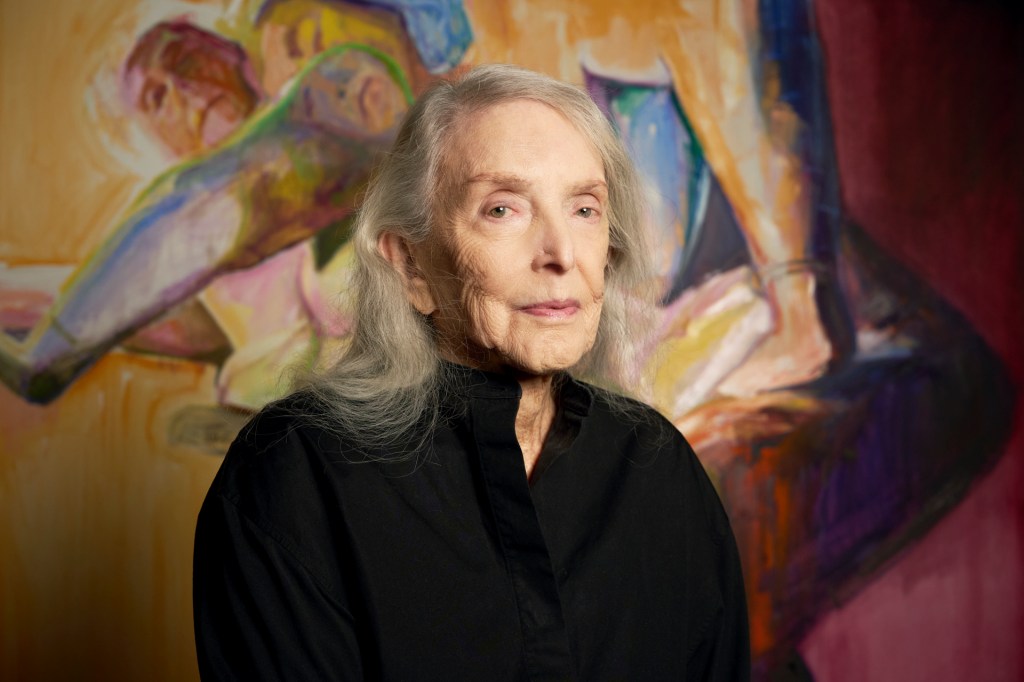Joan Semmel Details Her Painting on A.i.A.’s Latest Cover

Joan Semmel, whose painting Couch Diptych (2019) appears on the cover of the Spring 2024
of Art in America, is profiled in a story by Emily Watlington. From her SoHo studio, Semmel told A.i.A. the backstory of the artwork on the cover, which is a detail of a larger work shown below in full.
I use myself as a model, but I don’t think of my works as self-portraits. Portraits talk about characters in more specific ways, whereas I just use myself as the model because it’s convenient, and because I don’t want to objectify anyone else. In this particular painting, I used two versions of the same model. The couch image has usually been seductive in nature, with a nude spread out and being relatively sexy. I’m painting myself, an older person, in contrast to that. One image is of my older body in a seductive pose, but the second image, [the one on the cover], shows me in a much more defensive posture. The figure is holding her arm up, almost as if warding off the viewer.
The painting is a kind of play on vulnerability and power. This has everything to do with how the image of the female in art—in the past and even in the present—has always played on issues of vulnerability and seduction. But rarely does that woman have agency in any of that. She’s shown as passive. I’ve been interested in reversing some of that power dynamic.
I handled one body in a relatively realistic way; the other one is more expressive. I’ve always been interested in finding ways to use various styles without conforming to any one stylistic model. In Couch Diptych, I’m handling the paint in an expressionistic way and also in a more restrained way, trying to make them work together. At six feet high, this painting is pretty much within the scale that I typically work on, except because it’s a diptych with two panels—it’s double the width. I like painting my figures larger-than-life because I’m interested in iconic figuration rather than narrative figuration. I’ve always wanted my figures to feel iconic rather than to tell a story.
By doubling the figure, I’m trying to break down the static nature of figurative painting. When you see one image superimposed over another, you start to feel motion and time. I don’t want to create static images that get imprinted as some kind of definition of an individual. Paintings are always an image of that individual in one moment of time. Time is built by layers of images, one over another.
—As told to Emily Watlington
© 2024 PMC. All rights reserved.